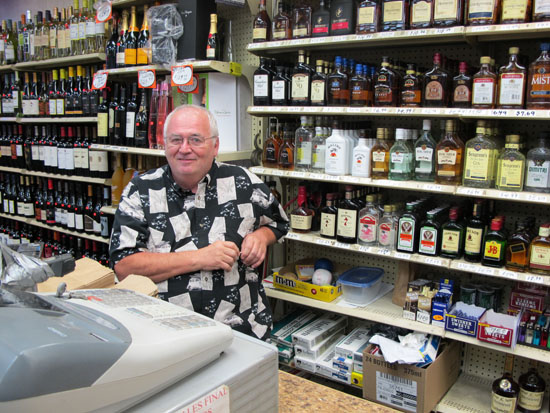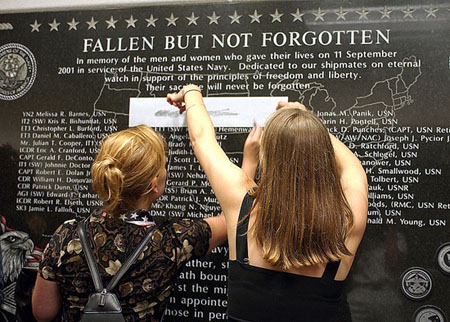Converging with Other Emerging Media
There is more to “convergence” media than just websites. There are other, emerging kinds of communication technologies that can be used in conjunction with traditional media for multifaceted, integrated storytelling.
There, for instance, the following: RSS feeds, email notifications, text messaging, electronic billboards and digital radio transmissions (RBDS).
RSS feeds are a way for media consumers to stay abreast of the latest content updated to their favorite websites. Currently, RSS is generally used by a small, tech savvy subsection of the media consuming audience, but it is gaining in popularity.
Many popular web browsers like Google Chrome offer RSS apps that make it easier to manage and consume content via RSS.
One legal concern that has arisen with Google’s RSS managing apps is the ability that Google users have to share web content from their RSS feeds with friends. I enjoy sharing items with friends on my Google reader account. The originators of this content accuse Google of cutting into their ad revenue by allowing people to share their content in this way.
Email notification is a good way to notify an audience of breaking news. In my own experience using Constant Contact on Windy Citizen, email notifications can also be used to publish and distribute short digests of the week’s best or most popular content.
HTML rich emails have the advantage of being able to carry a variety of content inside them. The ability to embed pictures and video are, in my opinion, two of the best ways to take advantage of this medium.
However, everybody hates spam. Some kinds of spam are illegal. My thinking is that media outlets should use a very light touch with their email notifications, lest their notifications be perceived as annoying or abusive.
Text messaging is similar to email in its advantages and drawbacks. In terms of immediacy, there is nothing more intimate and immediate that people’s mobile devices, which are usually with them during their waking and sleeping hours. But, spammy, overly aggressive text messaging is very annoying.
Billboards are definitely old school media. But high-def electronic billboards can be used to “broadcast” up-to-the-minute information to one of the few mass audiences left in media.
Finally, RDBS describes the additional, visual information that is transmitted with a radio signal and displayed on the radio’s faceplate. Not all radios are equipped with this technology, which is definitely something to consider. But the images and text can be used to supplement the audio broadcast.
Images have always been what radio is missing. RBDS makes it possible to add pictures radio.
Adding (Multi) Media to the Web
The term “mulitmedia” describes all the media tools — like sound, pictures and video — that the Web makes available.
Sites like YouTube are quite well know, by now, for having millions of hours of video that people can view for free.
Though some consider “multimedia” to be something of a dated, overused word, the concept is still important when considering how to tell stories in a meaningful way in today’s media environment.
The Chicago Tribune, when it reported on the Occupy Chicago marches over the weekend, used a combination of pictures, text and video to tell the story.
Still images have been a part of newspapers for many decades. But the Web has advantages over the printed page. Newspapers can create photo galleries of user-submitted photos to give multiple angles on a story.
Services like Flickr are a great stockpile of user-submitted photos, some of which are free to use and many of which have only limited Creative Commons copyrights.
A newspaper’s archive of still images can also be a source of revenue if they make digital copies available to institutions like local universities.
Though anyone can take a picture, capturing and processing an image takes skill. Cropping removes unwanted or distracting elements from an image. Sizing and resolution are important when making sure the image looks good on the webpage. And saving and choosing file type and quality are important for making sure an image is compatible with your content management system.
When recording sound it is important to use professional quality recording devices. Podcasting has become an easy way to bring audio content to the masses.
Web video has become extremely popular in recent years. It is particularly useful in today’s market when many viewers have only a limited attention span. Short videos work best.
The Web is the native space for interactive storytelling. Comments, polls and user submissions are now used more than ever in the news room.
Repurposing broadcast material for the Web
Broadcast material can be easily repurposed for the Web to extend the brand of the network online. Also, the Web is increasingly becoming a medium that can supplement broadcast news with additional material while providing opportunities for interactivity with the audience.
Repurposing broadcast content for the Web allows people to consume media at their own convenience. And mobile devices let them watch video or read articles while they are on the go.
Web video also allows the viewer to break free of the strictly linear constrictions that have limited the broadcast medium in the past. Viewers can move forward or backward in a video as they please.
Television broadcast operations have an advantage over radio broadcast because TV has more resources and bigger staffs. The Web lets radio break free of its strictly audio format with pictures and other media. Newspaper newsrooms have the largest staffs of all. And, as multimedia technology becomes more accessible and portable, print media can now have audio and video available online.
TV news websites were once known for their cluttered design. But, since the advent of Web 2.0, many TV broadcast operations have made use of the sleeker, simpler design that Web surfers have come to expect of the sites they frequent.
Utilizing the Web as an avenue for content can also provide opportunities for cross-promotions. In these days of tight newsroom budgets, any additional revenue stream is surely a welcome one.
Web producers for TV newsrooms will often find themselves adapting scripts as “print” stories for the Web. There are certain formatting issues to be aware of, however. Writing for the ear is different than writing for the eye. Attributions, for instance, would go after a quote, rather than before. This format is similar to what is seen in newspaper stories.
But for all the ways they are different, Web content and broadcast TV do share some similarities. Videos must be short and to the point to keep the attention of the audience. While the TV audience is generally more passive than the engaged Web audience, both seek the same kinds of stories from their news: weather, sports and local coverage.
Cell phone pics of ‘The Chicago Code’ shooting on Michigan Ave.
This is the second night I’ve seen the 20th Century Fox trailers toting around long cables, big lights and sundry camera equipment. They’re shooting The Chicago Code (premiering in Feb.) on location this week.
I took the cell phone pics (see below) last night, on Michigan Ave., across the street from Trib Tower, at about 9 p.m.. I didn’t see any big time actors or higher level production staff around. There was mostly just lighting crew at the moment I happened by.
Filming a TV show on location isn’t like filming a movie, apparently, when the entire area is blocked off. I remember the huge production around the Transformers 3 filming, near this same area, a little south on Michigan Ave..
There were just a few CPD officers to keep you back from the smaller-scale drama, here. It was more intimate.
Though there was some shooting going on below the street I was standing on, on Lower Wacker Dr.. The police didn’t let me go anywhere near it. I suspect there were more interesting sights to be seen down there. Que sera.
All this location shooting is a good sign, if you ask me. The Chicago Code‘s creator, Shawn Ryan, has already proven, with The Shield, that he knows how to make good use of setting in TV cop dramas. I must admit I’m looking forward to the show.
SEE PICS BELOW
The Maxwell Street Market: Fading Chicago Landmark Fights Recession on Economy’s Front Lines
Audio Slideshow: Visit the Maxwell Street Market
By Ben Craig, Len Kody and Nicholas Moroni
Bobbie Henry, of Chicago, began selling handmade jewelry and art pieces at the original Maxwell Street Market in 1976. She relocated to the new Maxwell Street Market, on Canal, in 1994. Today, she has a booth on a prime spot at the market’s latest location, on Desplaines, just north of Roosevelt.
Henry’s next move is a commentary on the market’s current, diminished state and its uncertain future.
“Another thing that’s fading me out of this,” Henry explained, “is I’m going on eBay with most of my art.”
The present Maxwell Street Market is open Sundays, from 7 a.m. to 3 p.m., on a short stretch of Desplaines Street north of Roosevelt Road. But many of the people who bought and sold goods at the original market say that its current incarnation, sanctioned and organized by the City of Chicago’s Mayor’s Office of Special Events, hardly measures up.
“I was selling leather clothes and bags [on Maxwell, and on Canal]. I would make $3,000 every Sunday.” Henry said, “Now, I only make $200 or $300.”
Longtime Maxwell Street patron Frank Kam remembers the old market before “the University [of Illinois at Chicago] took over.” It had “the smell of polish sausage and onions floating around.”
Sal Villarreal, a Streets and Sanitation worker who works the present-day market, remembers going to the Maxwell Street Market when he was younger, in the 1970s, and said it was “a lot more livelier than this.”
“The feeling of the city is gone with this market,” Villarrea explained. “This is the smallest I’ve seen the market.”
“The other market was better,” he concluded.



